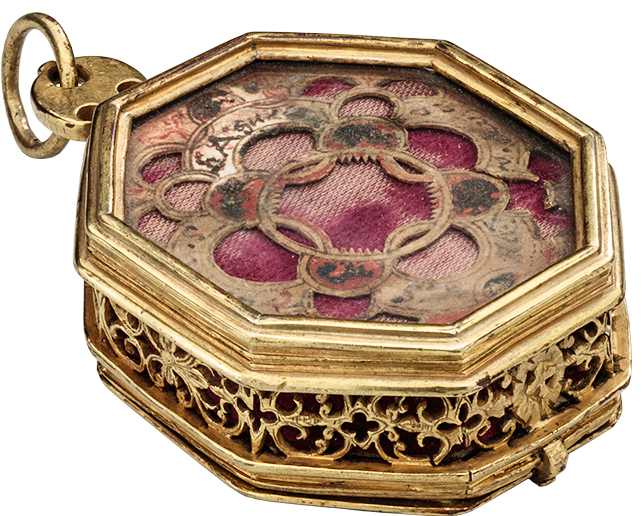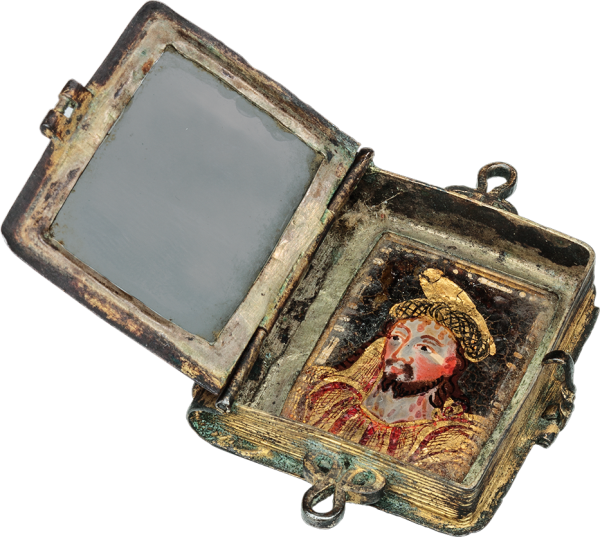


Octagonal Reliquary Pendant
, c. 1600


Octagonal Reliquary Pendant
Description
This reliquary pendant is difficult to situate historically because it is a composite object. It represents traditional handwork in the form of a paper cutout, combined with a jeweler’s beautiful fire-gilt brass case. The work of paper cutting, painting, and ornamentation, sometime combined with needlework, is comparable to work still being done in the nineteenth century by nuns and pious ladies. It is prayerful work, a devotional exercise in itself, and shows reverence to the tiny relic fragments that it would have framed and honored.
Early versions of this sort of handiwork might be found in the meticulous displays sometimes called “Paradise Gardens.” These textured and pious displays were then combined with paintings and cases by professional artists and artisan.
Unfortunately, because of water damage, only one of the labels of the original relic displayed in this reliquary is legible, inscribed “S. Agnes” at the center top; the other names are faded. Presumably the deep velvet-lined box would have also held an assortment of relics other than the ones that were visible through the glass, and perhaps there would have been another display in the glass on the other side of the pendant.
There is a second paper insert, this one decorated with a turquoise ground and silhouette flowers to which bone fragments seem to be still attached. The octagonal case, in contrast to the paper cutout, is not at all “home-made.” It has an openwork frieze in scrollwork patterns familiar from enamel work and other metalwork done for European courts and nobility
The latch to open the glass is easy to operate, and presumably the owner often availed herself of her privilege to look inside at her collection of relics after first praying and admiring the handiwork displayed behind the glass.
